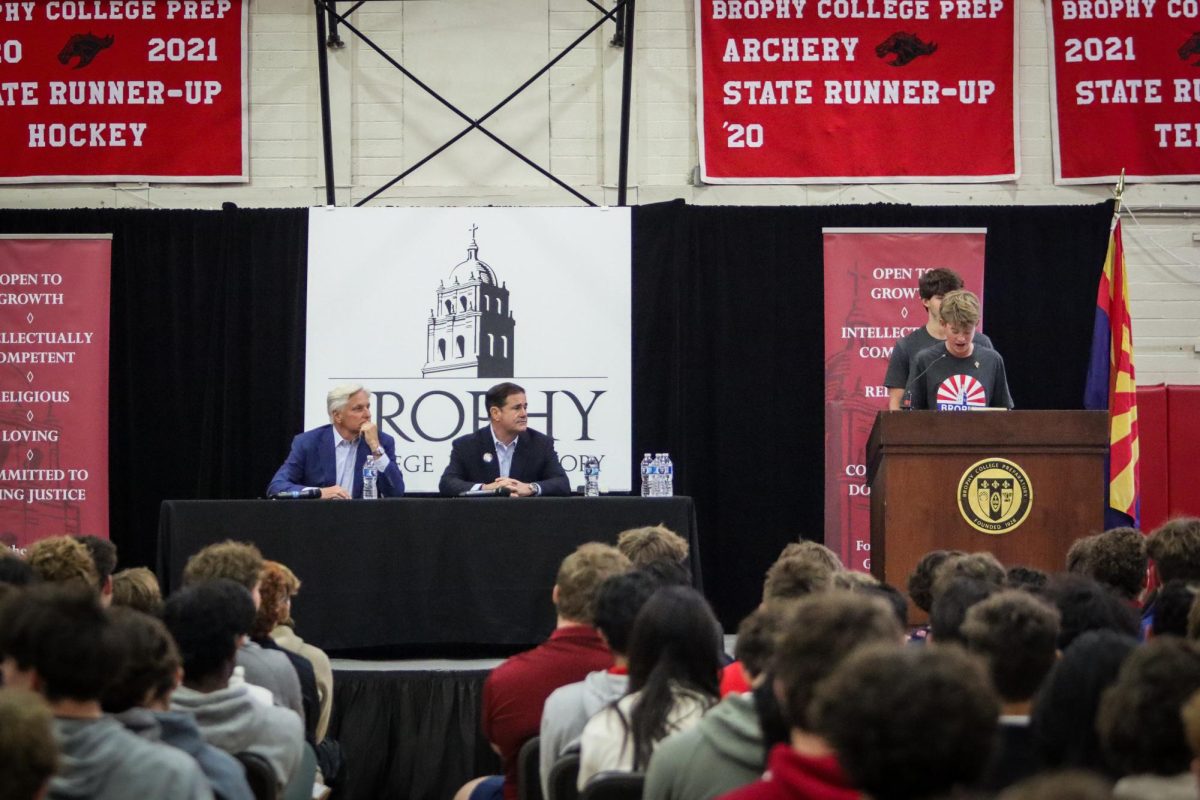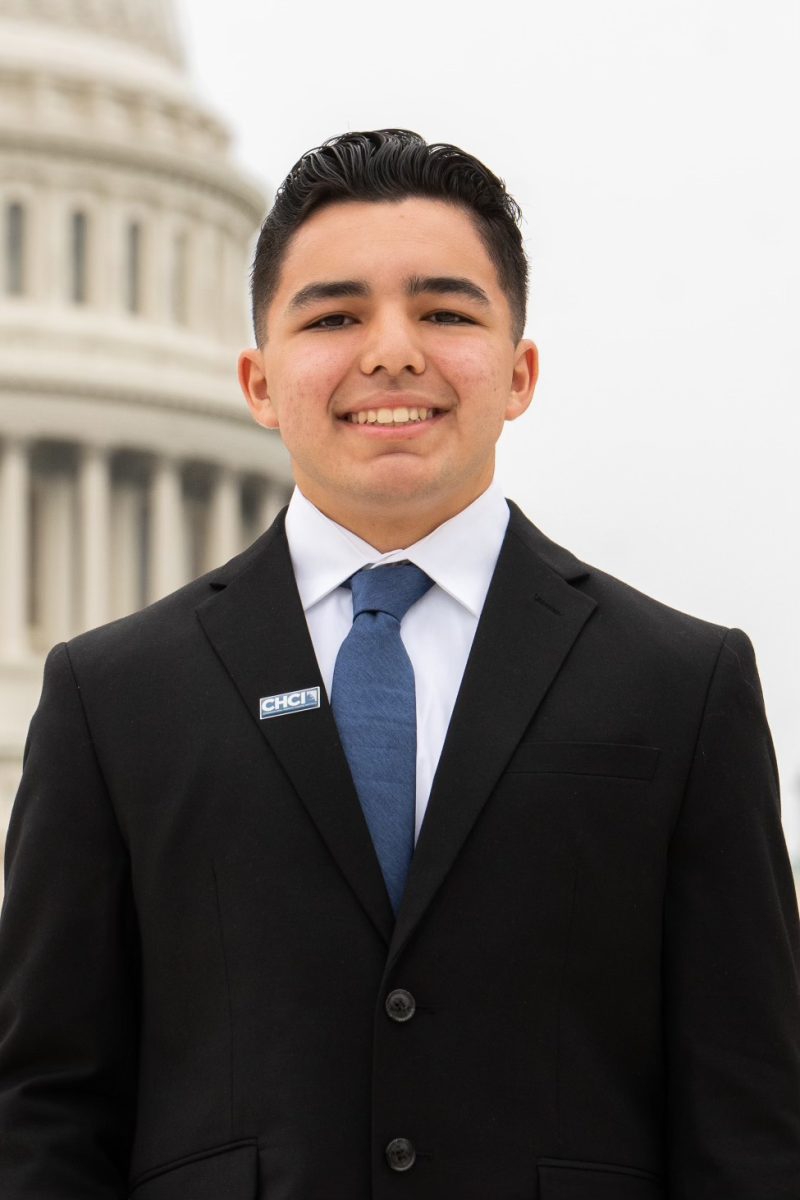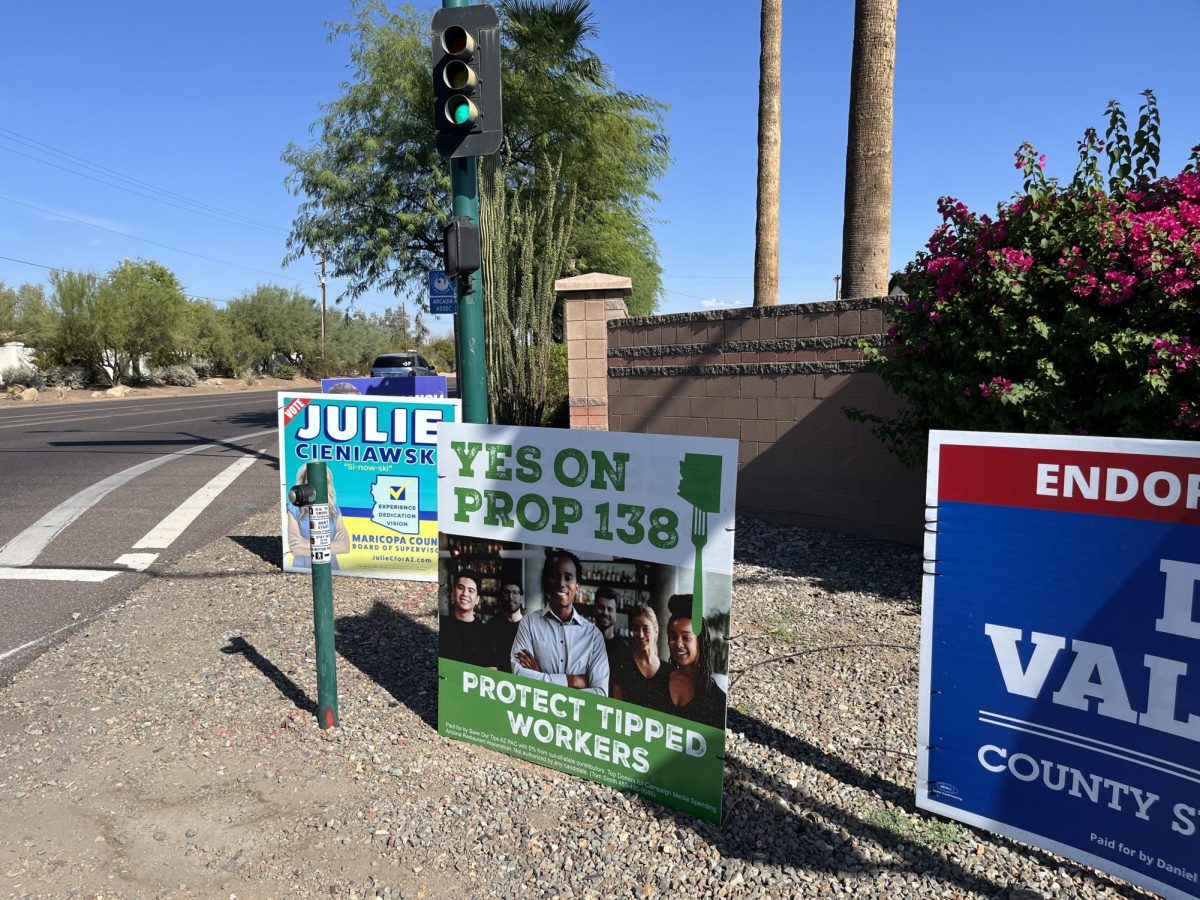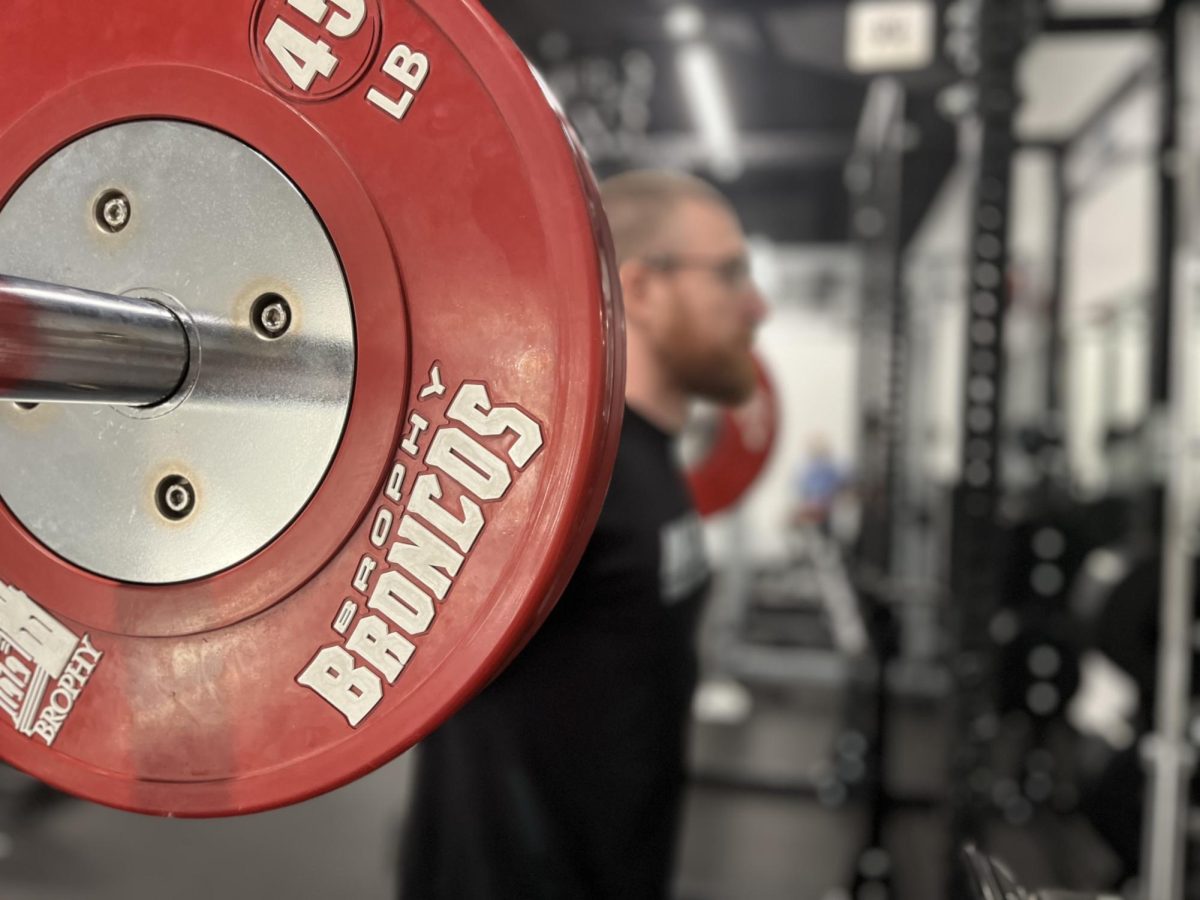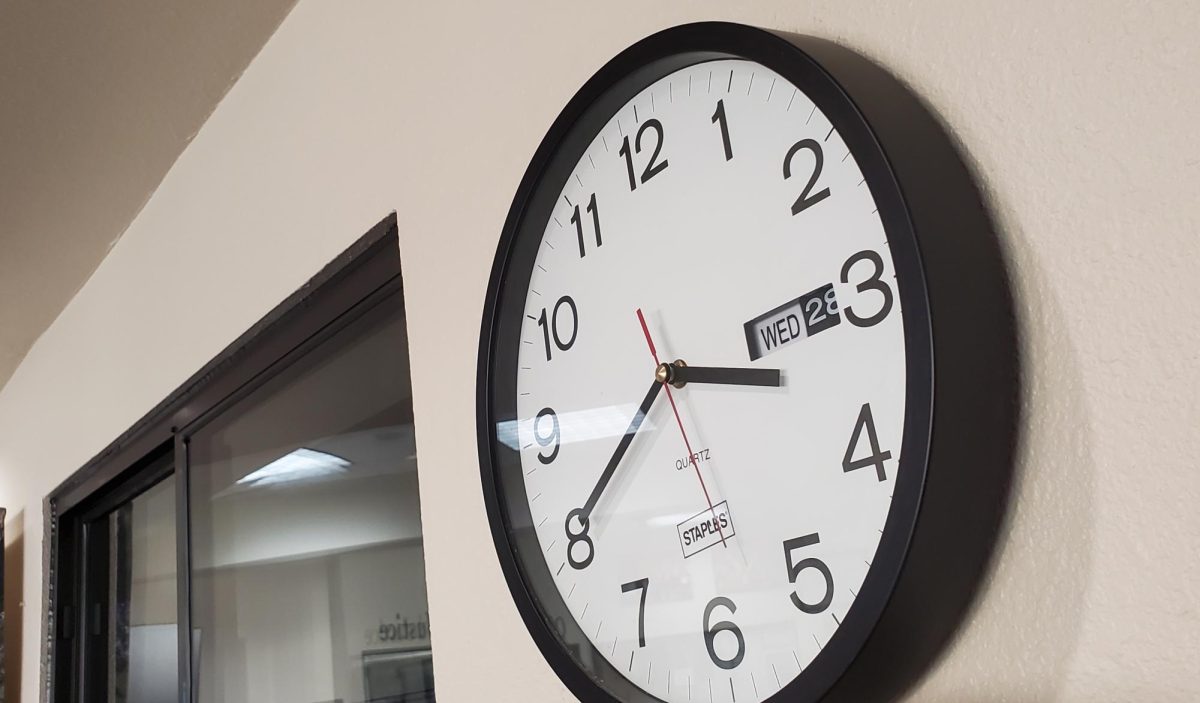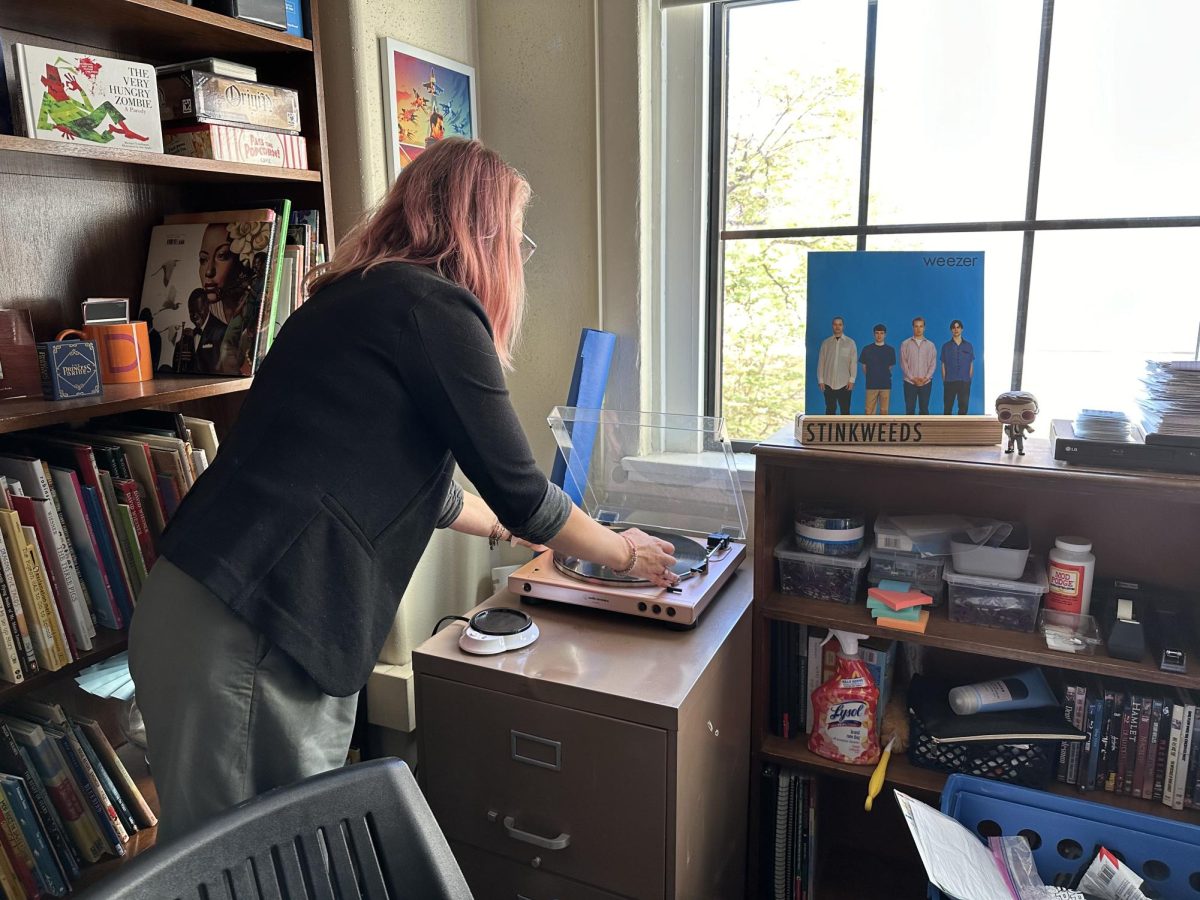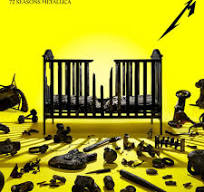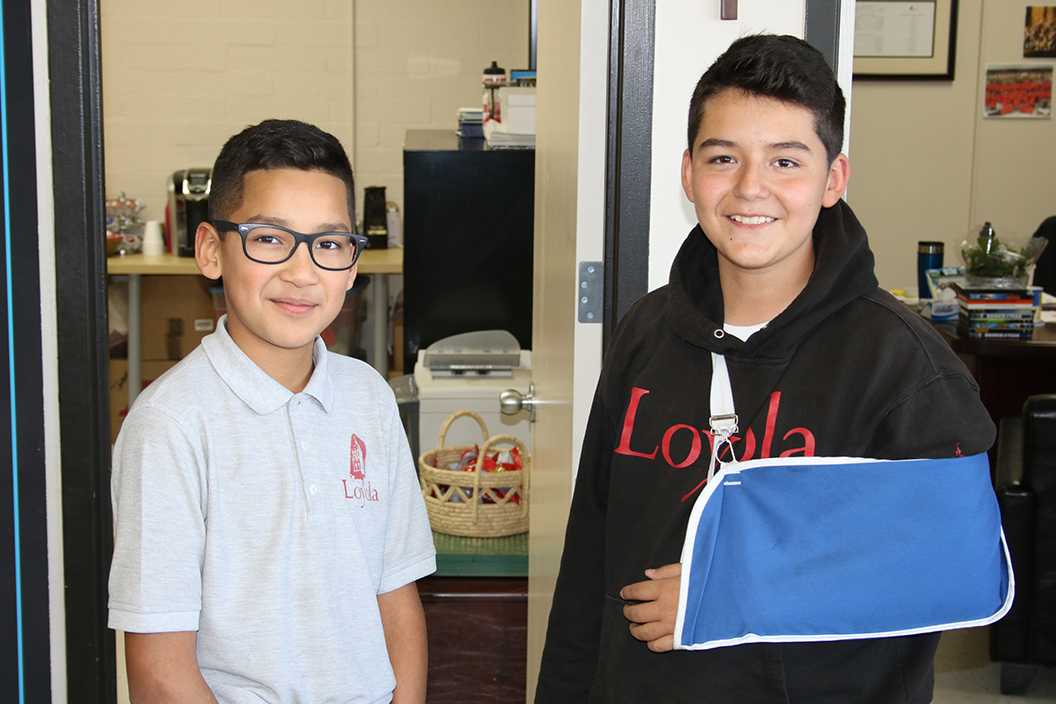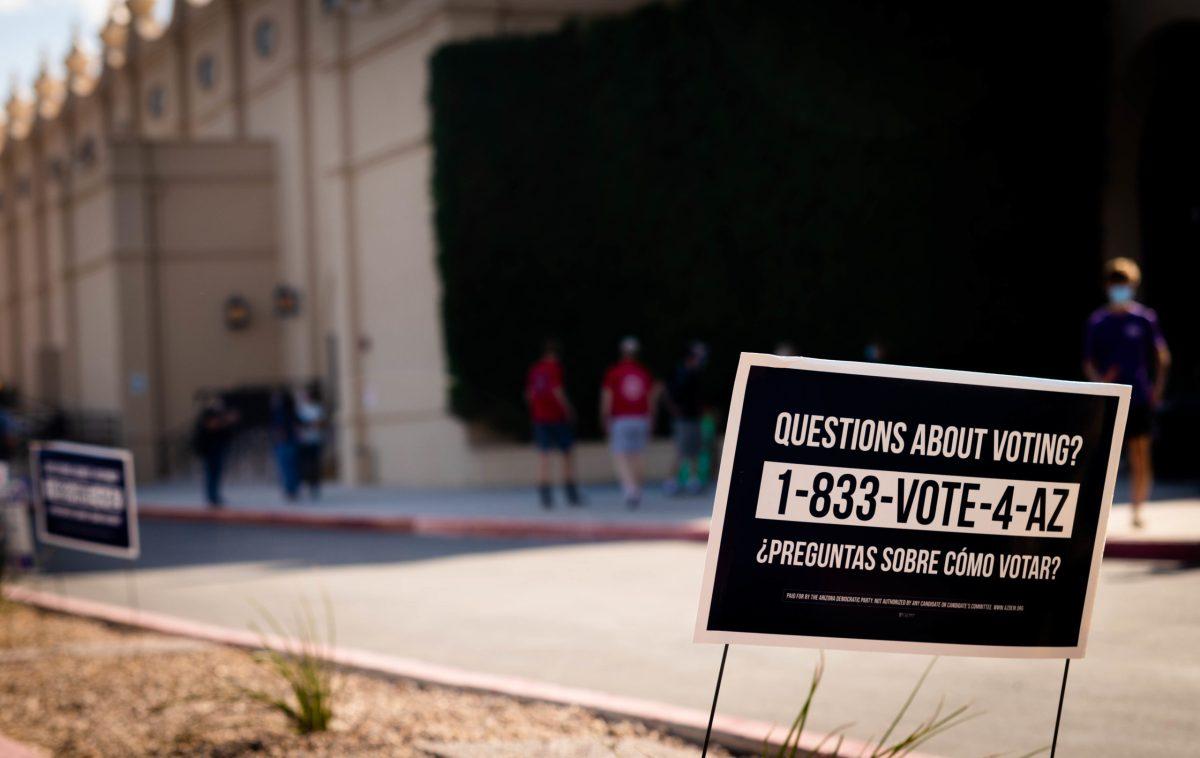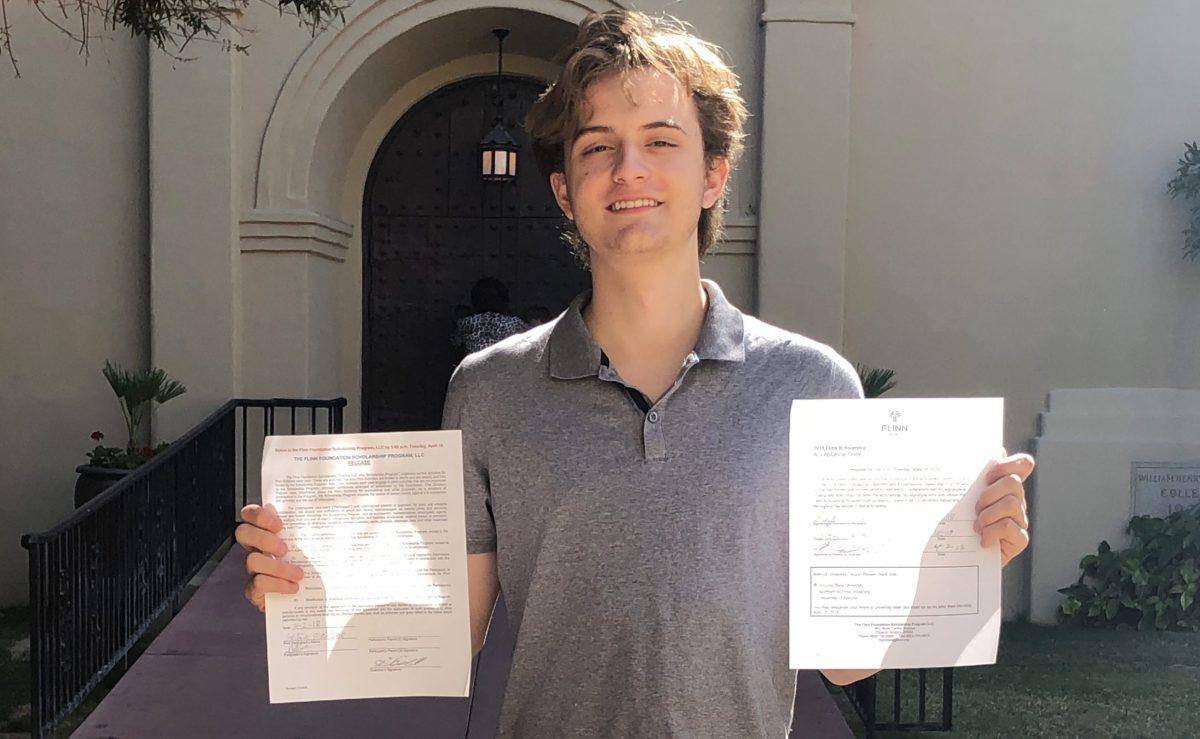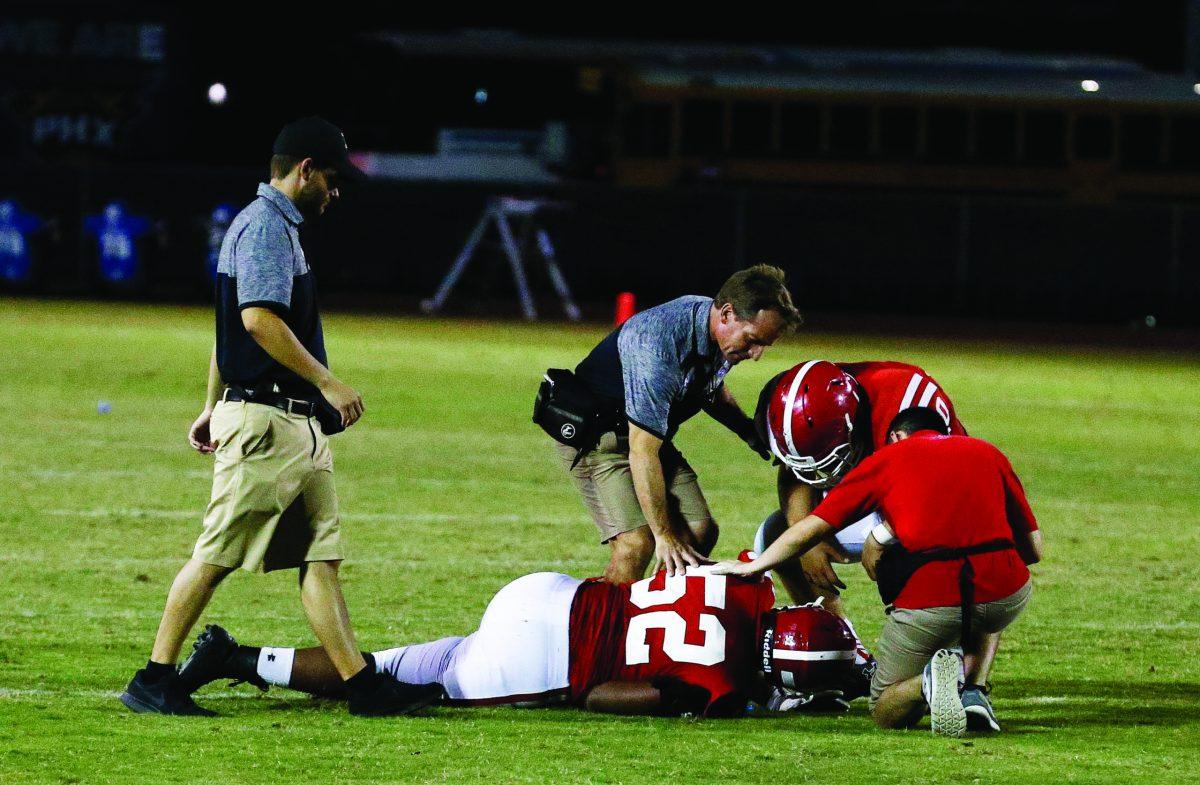Photo by Bryce Owen ’17 – Loyola scholars Adrian Flemming (left) and Victor Morales (right) pose for a photo showing their uniforms. The Loyola uniforms demonstrate a different style than the dress code at Brophy.
By Anthony Cardellini ’17
THE ROUNDUP
Although Loyola Academy has been a part of Brophy since its 2011 founding, it has some differences in terms of student dress code.
While Brophy’s dress code involves only basic clothing regulations, like needing collared shirts and belts, Loyola is much more specific.
Loyola scholars, as they are known, are required to wear a red or gray collared shirt with khaki or navy shorts.
“I don’t want to wear the same thing every day,” said Loyola student Felix Deglane ’20. “It’s weird not being able to wear what you want to wear. I like what the dress code is at Brophy.”
Deglane said, however, that wearing uniforms isn’t always a restriction on choice. He said his favorite combination of the uniform is a red shirt with khaki shorts.
Proponents of uniforms often say that they help decrease student bullying, because no one has any visible differences in socioeconomic status.
Deglane said he didn’t think that would be a big problem at Loyola.
“Loyola is a friendly environment for the most part,” Deglane said.
However, he did admit that the prospect of free dress encouraged good behavior.
“It gives you an incentive,” Deglane said. “We have this system called Passports where you can get a mark for not doing your homework or being disruptive, and if you have that clean then you get to wear whatever you want.”
Director of the Loyola Academy Ms. Kendra Krause, who was involved in the original decision for uniforms, said there are several reasons that scholars wear uniforms.
“Most of our kids come from schools where they have been wearing uniforms,” she said. “It’s something that most of the kids and their families are comfortable with.”
Ms. Krause said the second reason for uniforms was pride.
“The shirts with the logo is a school pride thing,” she said. “We want them to be proud of the community they’re a part of.”
Ms. Krause explained that another reason was being able to easily identify scholars. She also said that because the school provides the uniforms, families don’t have to shoulder the expensive costs of clothing.
Ms. Chabli Balcom, who teaches Latin at both Brophy and Loyola, said that she preferred teaching to students with uniforms.
“There is a definite strength in the idea of uniforms as something that takes away a distraction,” she said.
She said that this distraction comes from “brand battles,” where socioeconomic difference is evident in dressing.
“There is definitely some pressure in how the guys feel about it,” she said. “Particularly it’s evident in junior high, and that’s something [Loyola students] don’t have to worry about.”
Ms. Balcom also said that she didn’t think wearing uniforms inhibited style.
“You are trying to be able to express yourself as an individual, not just by the way you look but the way you act,” Ms. Balcom said. “That’s where you can really bring in your personality, or your style. You can do that in other ways through your behavior, through your words and through your actions, which are ultimately more important.”
She also said that if students felt expressing physical style was necessary, they could still show their personality through their socks, shoes and hair.
Deglane said that he was certainly excited for getting to Brophy and having less restrictions on style.
Ms. Balcom agreed that this is something many students look forward to.
“Some students are really excited to be able to get to Brophy and not have uniforms,” she said. “There are those that prefer to express themselves through that physical style.”

